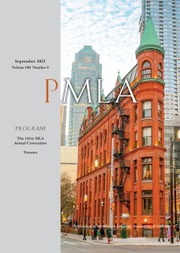No CrossRef data available.
Article contents
J. G. Farrell's Lost Polio Novel
Published online by Cambridge University Press: 06 January 2025
Abstract
This essay brings to light J. G. Farrell's novel The Lung (1965), a singularly inventive and politically incisive fiction of epidemic polio. It situates the novel in three key contexts: the neglected history of epidemic poliomyelitis and the state response to it in the postwar United Kingdom; the mid-century polio culture industry; and the English novel itself, which genre The Lung finds incommensurate with the range and extremes of physical pain caused by poliomyelitis. Farrell's novel has been out of print since a paperback edition of 1967 and has never been published outside the United Kingdom. This essay understands the obscurity of The Lung as indicative of a larger and increasingly urgent disconnect between literary studies and the history of public health.
- Type
- Essay
- Information
- Copyright
- Copyright © 2024 The Author(s). Published by Cambridge University Press on behalf of Modern Language Association of America


